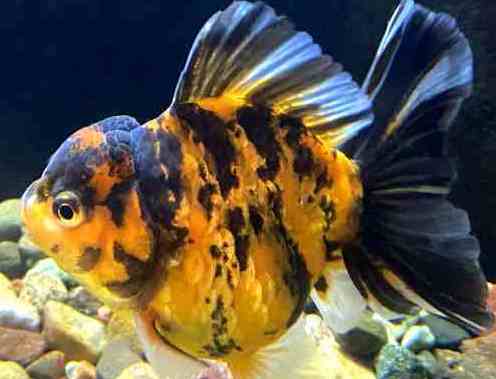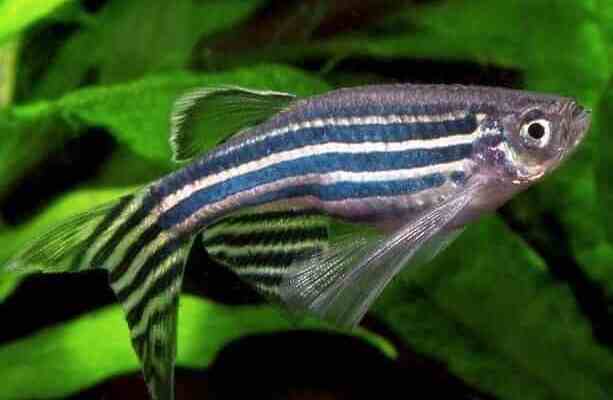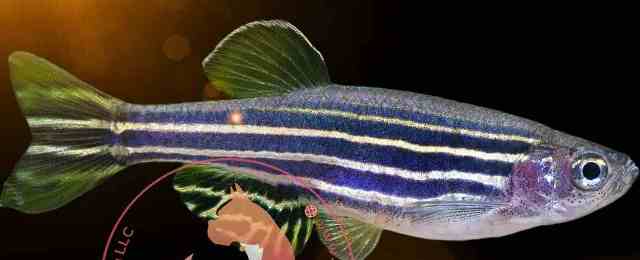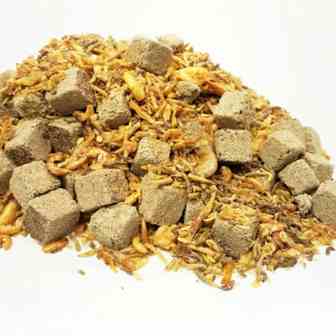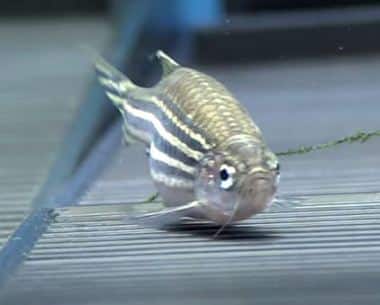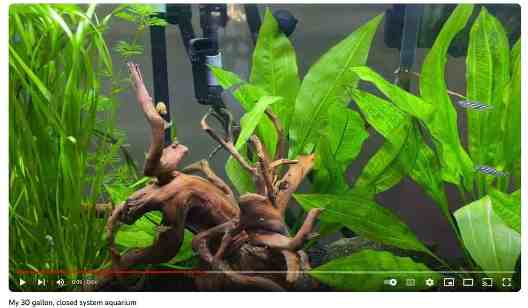Zebra Danio / Zebrafish Care – Quick Start Guide
These are in alphabetical order and have links to more information about the subject.
Aquarium Size:
What size aquarium do they need? What I did: 30 gallons for 10 Danios plus community fish.
They are schooling fish, so you will want to buy at least 15. You will probably lose 5 to pet store disease after you get them home.
Danios are extremely active fish. To accommodate 10 of them, I would probably go with at least a 30 gallon tank to give them plenty of room to swim. More...
Aquarium Set Up:
Here are 6 suggestions for setting up a Zebra Danio Aquarium. 6 steps…
Cost:
How much does a Zebra Danio Fish cost?
PetSmart has small Zebra Danios for sale at $2.29 each. If you buy them from an online seller, you will spend $10 each and up. Why buy from an online seller? You won’t have to deal with loss due to pet store diseases.
Behavior:
Are they peaceful or aggressive?
Peaceful. As mentioned, they get aggressive among themselves during their morning mating. No harm ever comes from this activity. More…
Breeding:
How difficult are Zebrafish to breed?
Very easy to breed. If you have a small school of Danios they will mate every morning when the lights go on. Read more: 9 simple steps to breed zebrafish…
Food – Feeding schedule for Zebra Danios:
How often should I feed my Zebra Fish?
Having kept them for many years, I would recommend that they be fed small amounts three times a day. They are very active, so I have found that they need to feed that often or they will get skinny. More about feeding you Zebra Danio…
Food – Amount:
How much food should I feed my Zebra Danios?
Fish owners like to overfeed their fish, so feed just enough that they eat everything in five minutes or so. If you keep to recommended number of feedings per day, your fish will be healthy and happy. More about feeding your Zebra Danios…
Food – Types:
What do I feed them?
You’ll want to feed them a well-rounded mix of various fish foods, both protein and vegetable based. They like and will eat every type of fish food including flake food, pellets, frozen and freeze-dried foods. More about feeding you Zebra Danio…
Keeping Zebra Danios easy or hard?
Difficult or easy to keep?
Easy to keep fish. They like to play and fight among themselves but won’t disturb other community fish.
Lifespan:
How long do Zebra fish live?
They will live for approximately 2 to maybe 5 years. More…
Bonus Danio Super Care: Here’s how to help your Danios to live 5 years. The 5 year plan…
Origins:
Where do Zebra Danios originate from?
Basically from the country of India. Here’s a map…
Size:
How big do Zebrafish get?
Zebra danios are a small fish. Most of the zebrafish I’ve kept were 1.5“ to 2” in length. More…
Substrate:
What type of substrate should line the bottom of the tank?
This choice is up to you or may be dictated by the other community fish. They are mid-level swimmers that rarely check out the substrate.
Tank Mates:
What type of fish can I keep with my Zebra Danios?
Just about any tropical fish. For example: Neon & Cardinal tetras, Guppies, Mollies, Platies, other Tetra Fish, and what I have with my Danios Tiger Barbs.
You can also keep them in a cool water aquarium with goldfish. 12 types of recommended tankmates…
Water Parameters:
What water parameters do they need?
They want the water condition similar to their native habitat. They can handle a wide variety of temperatures, from 61 Degrees F. up to 93 degrees F.
This said, they are flexible in regards to water parameters and can do just fine with normal tap water set at the proper temperature.
Something I find interesting is that they can handle water temperatures as low at 61 degrees F. This means that they would make a great addition to a goldfish aquarium. More…
The 5 most dangerous freshwater fish kept in aquariums
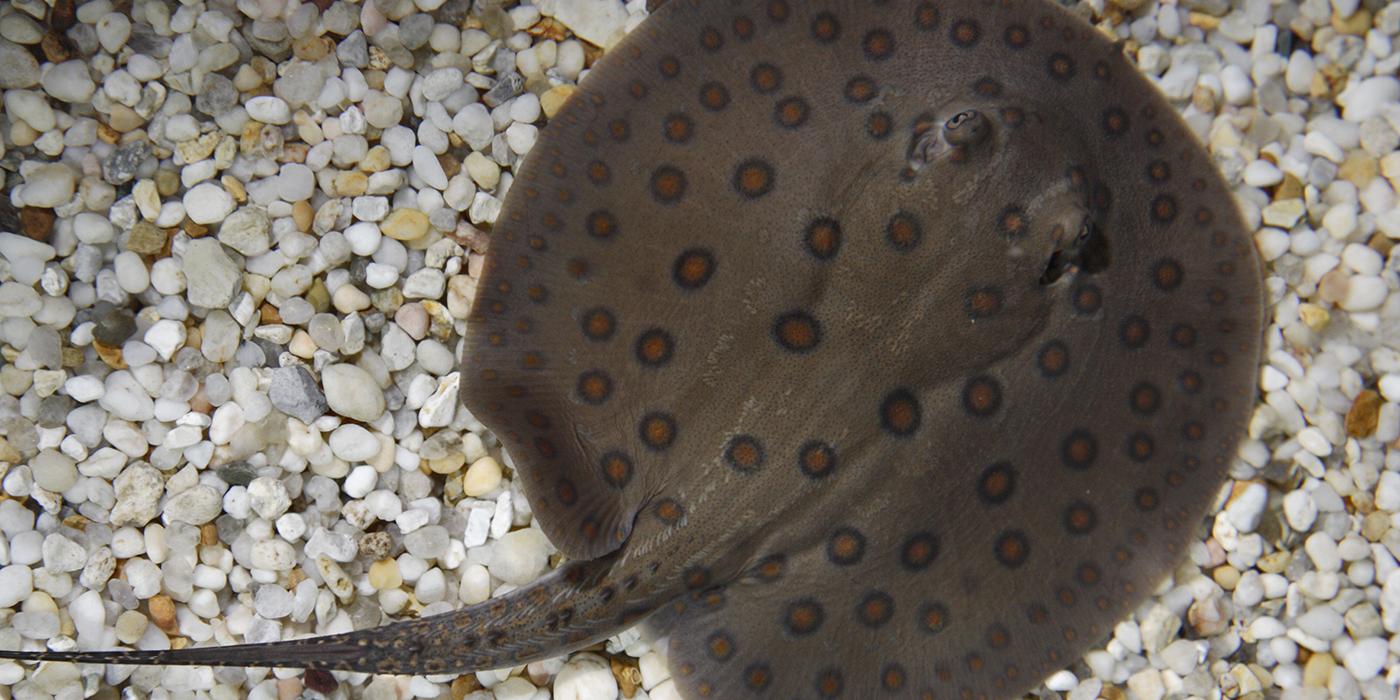
The king of all pancake shaped, aquarium fish.
These fish need a giant tank. Best guess is 200 or more gallons based on the length of the adult stingray.
Are you thinking about creating a website?
I used Divi WordPress software to create this website.
You can create a website like mine. Divi makes it easy. Drag and drop or copy and paste, easy. Tap here to give it a try.

I’ve used divi for 4 years and strongly recommend it.
![]()
Here is what is included in this essay about Zebra Danio Care (links to section)
1. Introduction
2. Description, appearance, and size
4. Behavior
6. 5 year plan
9. Getting the aquatic landscape of your aquarium ready for your Zebrafish
10. 12 recommended of tankmates you should consider for keeping with Zebra Danios
11. 9 simple steps to breed Zebra Danios
12. Zebra Danio diseases and how to fix them
13. Bonus: How Zebra Danios are helping humans in scientific health research
1. Introduction
According to Wikipedia, there are 27 different Danio species. (https://en.wikipedia.org/wiki/Danio) For the sake of simplicity, this article will discuss Zebra Danios. Note: They are also called Zebrafish or Danio Rerio (scientific name).
It’s likely you either just bought some Zebra Danios or you’re going to buy some.
Good choice! They are playful, active, and enjoy interacting with each other. A strong plus is that they won’t harm their tank mates.
Keep a couple of dozen of this gentle and active fish in your community tank for a lively aquarium setup.
I’ve kept Zebrafish for years. They are a fun, easy to care for fish and they’re not shy, which I think is a huge plus.
You don’t need a lot of experience to keep Zebra Danios.
That said, bear in mind that you are the sole care taker and provider for this little fish. A key to providing Zebra Danios with a long life is education. They can’t tell you if something is wrong, so it’s up to you to know enough to correctly judge your fish’s health and take any actions needed for proper care.
In this article, I will assist you in building the knowledge you need. Your other fish will end up benefiting from what you learn about Zebra Danios.
2. Description, Appearance, and Size
Zebra Danios are a small fish with a body shape that is long, rather than wide or tall. At maturity, they are about 1.5 to 2 inches in length (3.8 to 5.0 cm).
They are called Zebra Danios because of their stripes. They have varying white or slightly yellow and dark stripes, like a zebra might have.
Besides the typical stripes, the male Zebrafish, have a golden yellow hue, which is more intense when mating.
3. Where Do Zebrafish Originate From?
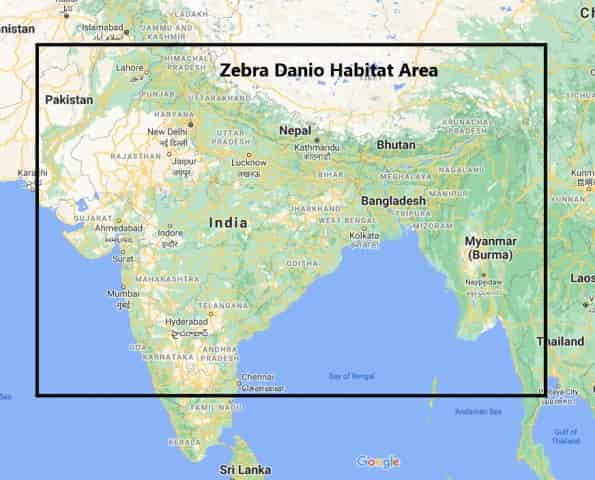
See the wallpaper size image of this Danio by tapping on the picture. Opens in a new tab.
This awesome image is provided by Texas Aqua. Tap here to check the prices.
4. Behavior
Zebrafish are a peaceful schooling fish that keep to themselves.
They aren’t shy and in fact are very active and love to school, with the Zebra Danio group darting this way and that.
Because of their gentle disposition and activity, they’re a popular fish that can be found in almost every pet store. The only reason a pet store wouldn’t have them in stock is because they ran out.
Zebra Danios form tight schools which are entertaining to watch. In the wild they group together to protect themselves from predators. As far as Danios are concerned, there really is safety in numbers.
They will mate every day, right when the lights come on. This creates a real frenzy of fast swimming, mock fighting, egg laying, and egg fertilizing. It is amusing to watch. This alone makes it worthwhile to keep a school of Zebra Danios.
5. Aquarium Setup for Zebra Danio Care (6 steps)
The ultimate landscaped aquarium setup for a zebra danio would be a lightly stocked 55 gallon or larger aquarium. Place a good amount of live plants and gentle water movement and your Danios will think they are in heaven. Below are six suggestions to consider when setting up a tank for Danios:
1. Plants:
My top three plants for a danio tank are sword plants (all sizes), Java fern, and sagittaria.
2. Danios are schooling fish:
Zebra danios are very social with their own kind. You might not think that if you were to see them right after I turned on the lights. At first light, they fight, chase and mate all at the same time. No worries, this is typical behavior for Danios. A zebra danio by itself can’t thrive.
3. How many Danios to place in a tank:
As mentioned earlier, they are schooling fish and not very expensive, so for a beautiful aquarium I recommend buying at least 20 fish. To translate their size into how large of an aquarium is needed is if a one inch fish needs one gallon of water then one zebrafish (a two-inch fish) will want two gallons of water.
4. Water Conditions:
The aquarium temperature can be as low as 61 degree F or as high as 93 degrees F (16.1 degrees C to 33.8 degrees C). Although very tolerant of wide PH ranges, Zebrafish prefer medium hard to soft water.
5. Chlorine, Chlorimine, and Ammonia:
Like all fish, they don’t like ammonia or chlorine. Therefore, only add the fish to a well-seasoned aquarium. Well-seasoned = allowing beneficial bacteria to grow so there is no ammonia or nitrite to harm the fish. Neutralize the chlorine and chloramine with a water conditioner. I have used “API Stress Coat” (price check) for decades and can recommend it for use in your aquarium.
6. Lighting:
As far as setting a light period, honestly, it probably doesn’t matter much. That said, the area where zebra danios are found in nature is not on totally the equator. This means there are some changes in the length of sunlight from summer to winter.
6. The 5-year plan
Zebra Danios usually live 2 years. Here’s how to help them live 5 years.
11 thoughts to help your Zebrafish live to be a very healthy, five years old (“The five-year plan”).
Zebra Danios usually live about 2 years. Under optimum conditions, they might live to be five years old.
What are those optimum conditions?
If you want your Zebrafish to live to be five years old, here are a few suggestions:
1. School size:
Because they are schooling fish, having many other Zebrafish around is important to them to feel safe. Feeling safe will keep their stress levels low. Low stress levels = fewer incidents of disease and that means fewer deaths due to illness.
You will want to have at least 10 Zebra Danios in your aquarium. Because they are very active (always swimming), I would suggest that you provide them with at least a 20 gallon long aquarium.
Optimum school size and tank size for the “five-year plan” would be 20 individuals in a lightly stocked 55 gallon tank.
Side note: When buying Danios, you will need to account for “first week’s die off”. To end up with 20 fish, do this:
A. If you’re buying them from a big box pet store, you will probably want to buy 30 Zebra Danios. This will account for the big box pet stores 30% die off rate. When all the dying is done, you should end up with 20 Zebra Danios.
B. If buying from a local pet store it’s possible you can get away with buying only 20 to 23 fish.
C. If you are buying from an online seller you would probably be ok with buying 21 fish.
2. Aquarium size:
As I mentioned, a tank size of 55 gallons would be optimal for the five-year plan.
3. Water Temperatures:
If keeping other tropical fish, then the water in your 55 gallon aquarium would be 78 degrees F. This is to make the other community fish happy. Zebrafish, for the most part, don’t really have a temperature preference.Zebra Danios are very flexible with tank temperatures. They can handle temperatures down to 61 degrees F. This makes them great companions for Goldfish who have to have cool water.
4. pH:
pH is not all that important. Around a neutral, 7 pH is fine.
5. Water changes:
50 to 90% water changes weekly is my key to keeping fish super healthy. If you really want your Danios to live five years (“five-year plan”) you should do this religiously. Of course you must use a water conditioner as a “just in case.”
6. UV sterilization:
I use high quality UV sterilizers hooked into the aquarium return tubes of my canister filters. Having UV sterilizers reduces pathogens and parasites (and algae if you have plants and plant lights).
7. Filtration:
I always try to “over-filter” my aquariums. I prefer the fish swim in clean water. To give an example of over-filtering, I have a 30 gallon aquarium that has two Fluval 207 canister filters running all the time.
10. Tank mates:
Here is another area where I will somewhat disagree with other experienced fish keepers. I don’t think tank mate selection is all that important. As long as water parameter needs are similar, I really think the most essential consideration is to make sure the other fish can’t fit the zebra danios in their mouths. The five-year plan goes out the window if another, larger fish eats your Danios.
11. Under stocking:
There are several benefits to under stocking a tank.
1. Low bio-load (i.e. less fish waste / poop in the water).
2. Low stress levels. Fewer fish, less stress.
3. Under stocking means less likelihood that pathogens and parasites would have a place to gain a foothold.
Those are a few ideas on how to help your Zebra Danios live to be five years old.
If you click on this ad and decide to make a purchase I will make $44.50.
Want to make money from your aquarium hobby too?
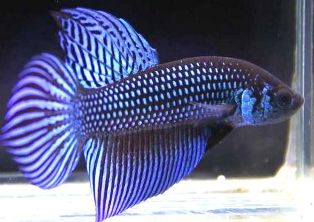
You can use the website creation software I use and design and build a website like this one.
Of course there are no guarantees and it can take quite a while to do, but it won't happen if you don't start.
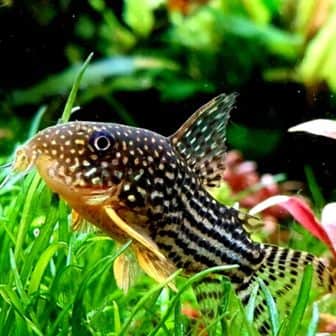
I've used divi for at least 4 years now and strongly recommend it. Tap to visit the Divi website.
This is an affiliate ad for the software (Divi) I used to create this website.
7. What to feed, how often to feed and how much to feed Zebra Danios
If the zebra danio hobbyist wants to feed danios on what they get in nature, then a diet of invertebrates and some plant material would be appropriate.
The research I’ve done has led me to realize that processed fish foods are not optimum foods for fish. Considering how much of processed fish food is grains, maybe processed fish food would be better fed to cows. Live or live frozen foods are a better choice for the “five-year plan.
The invertebrates could be live or frozen brine shrimp, bloodworms, fruit flies, small daphnia, etc. In other words, just about any frozen or freeze-dried food you could get at your local fish store.
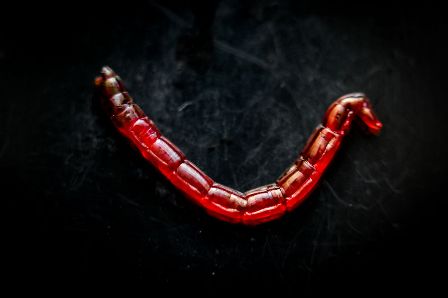 Bloodworm – not to scale of course.
Bloodworm – not to scale of course.
Plant material would be anything you might feed a plecostomus, Spinach, zucchinis, peas, etc.
Once per day I feed my zebrafish food I’ve created. My homemade fish food includes zucchini, spinach, shrimp, clams, tuna and plain infant rice cereal. I blend the mix using a food processor. Then I add enough plain gelatin to keep the mix barely together after I add it to the aquarium.
Zebra Danio Feeding Tip: That Danios are extremely active in an understatement.This activity burns a lot of energy and I’ve noticed that they stay fat and happy if fed at least three times a day.
8. Water parameters for Zebra Danio Care
The ultimate landscaped aquarium setup for a zebra danio would be a lightly stocked 55 gallon or larger aquarium. Place a good amount of live plants and gentle water movement and your Danios will think they are in heaven.
Note: My top three plants for a danio tank are sword plants (all sizes), Java fern, and sagittaria.
As mentioned earlier, they are schooling fish and not very expensive, so for a beautiful aquarium I recommend buying at least 20 fish.
Regarding water conditions, the aquarium temperature can be as low as 61 degree F or as high as 93 degrees F (16.1 degrees C to 33.8 degrees C). Although very tolerant of wide PH ranges, Zebrafish prefer medium hard to soft water.
Like all fish, they don’t like ammonia or chlorine. Therefore, only add the fish to a well-seasoned aquarium. Well-seasoned = allowing beneficial bacteria to grow so there is no ammonia or nitrite to harm the fish. Neutralize the chlorine and chloramine with a water conditioner. I have used “API Stress Coat” (price check) for decades and can recommend it for use in your aquarium.
As far as setting a light period, honestly, it probably doesn’t matter much. That said, the area where zebra danios are found in nature is not on totally the equator. This means there are some changes in the length of sunlight from summer to winter.
Zebra danios are very social with their own kind. You might not think that if you were to see them right after I turned on the lights. At first light, they fight, chase and mate all at the same time. No worries, this is typical behavior for Danios. A zebra danio by itself can’t thrive.
To translate their size into how large of an aquarium is needed is if a one inch fish needs one gallon of water then one zebrafish (a two-inch fish) will want two gallons of water.
9. Getting the aquatic landscape of your aquarium ready for your Zebrafish
Starting at the bottom of the tank, you can go one of two ways:
- You can add a substrate. Gravel is a common substrate choice that comes in several different colors. Let’s assume you’re not a beginner and we’ll eliminate pink and neon blue gravel.
My personal choice would be either a natural gravel color or black.
- If you’re relatively OCD leaving the tank bottom bare will allow a quick but complete clean up. You will still be able to enjoy the school of Danios with this set up.
What other things should be considered in decorating your Danio aquarium?
If you have a planted aquarium, you won’t need to do anything except add the fish.
If your tank is bare and assuming you want some decoration, you will probably want to go with some large and small stones and driftwood.
Because Zebra Danios are mid-level swimmers that are very active, you will want to leave plenty of room for them to swim.
10. 12 recommended of tankmates you should consider for keeping with Zebra Danios
Now that you’re tank is set up and your Zebra Danios are in place it’s time to add few other fish to liven things up.
Here is my list of 12 fish that would work well in a Danio tank.
(Please note: This is kind of a no brainer but don’t mix your danios in with other fish that are large enough to eat them.)
Let’s start with fish that are similar in behavior: Top three peaceful schooling fish:
- Neon Tetras
- Cardinal Tetras
- White Cloud Minnows
Here are my top three fish that need similar water parameters:
- Cherry Barbs
- Harlequin Rasboras
- Guppies
My top three fish species that can “keep up”:
- Tiger Barbs (I have these in with my Danios)
- Other Danio species
- Rainbow Fish
Other fish that would go well with Danios “just because”:
- Mollies
- Swordtails
- Rummy Nose Tetras
Any of the above 12 fish would go great in your community aquarium with Zebrafish.
11. 9 simple steps to breed Zebra Danios
I should actually write about how to stop Zebra Danios from breeding. That would be a bigger challenge. If you have a school of happy, healthy Danios, they will breed every morning when the lights go on. So your role is to turn on the lights. Good job. You’ve just bred Zebrafish!
If you want to breed zebra danios and then raise the fry, here are some suggestions that will make that likely.
1. Set up a breeding tank. I recommend a 10 gallon or smaller aquarium. This would be a tank with something on the bottom to allow the fertilized eggs to fall through so they don’t get eaten. This could be a layer of marbles or a grate in which the slats are close enough together to keep the adult fish from going after the eggs.
2. You can tell males from females as the females will have a fatter body. When mating, the males will also have a yellow golden sheen in addition to their stripes.
3. These fish want warmer water to breed in. If you’re keeping them in an unheated aquarium, allow them to get used to the warm water breeding tank before placing them into that aquarium.
4. Place your choice of adult Zebra Danios in the breeding aquarium. Do this after they are done with their morning breeding ritual. Feed them as normal and then, in the evening, turn off the lighting.
5. In the morning when the lights go back on, the fish will begin laying and fertilizing eggs automatically. You won’t need to feed them. When they appear to be done mating, you can move the adults back to their regular tank.
6. On a side note, well fed female Danios can lay up to 300 eggs every day!
7. The eggs will hatch in two to three days. About 2 days after that, the fry will start swimming around. At this time, you can start feeding the fry. Keep the fry in a small tank so that they can find the food you give them. Feed them food small enough to fit in their tiny mouths. I suspect baby brine shrimp will be too big, so stick to cooked egg yolk and rotifers at first. When they are a bit larger you can feed them larger foods including brine shrimp, micro worms, and similar sized foods.
8. It won’t take long for the fry to grow to adult size. They reach maturity in 90 days after hatching.
9. Zebra Danios are an excellent fish to practice your fish keeper’s breeding skills on. You don’t need to do much and the less you mess with the breeding, the less chance you’ll have of messing things up. Just let the fish do what they want to do naturally and your efforts will be rewarded.
12. Zebra Danio diseases and how to fix them
Zebra Danios can contract the same diseases that all tropical aquarium freshwater fish can get.
It’s said that an ounce of prevention is worth a pound of cure. How can you reduce the probability that your Zebra Danios become ill? Here is what I do and it works great.
- Change 50 to 90% of the aquarium water each week. Sometimes I change out a lot more than this.
- Use a water conditioner that eliminates chlorine and chloramine. Add this each time you do a water change.
- Use a high quality UV sterilizer.
Here are infections that can affect your fish and suggestions on how to fix them:
1. Bacterial Infections
Symptoms include open red sores, cloudy eye(s), excessive body slime, gill rubbing, and fin/tail rot. To fix these issues. If I were purchasing a medication for my sick fish, I would buy API Fin and Body Cure. This is the same company that makes the aquarium water conditioner I’ve used for 30 years.
2. Fungus infections
Fungus is usually shows up as cottony growths on the fins, body or mouth of the fish. You might also see a reddening of the body or fins. I would recommend the same company for treatment of this problem. API Pimafix Antifungial should do the trick.
3. Parasite infections
Parasite infection shows up as wasting disease or a swollen abdomen (scales are raised). API General Cure will control aquarium fish parasites.
4. Ick
Ick (a parasite) shows on a fish as white dots. API Super Ick Cure will correct this problem.
Are Zebra Danios right for your aquarium?
I’m going to say a strong yes in answering that question. They are easy to care for, undemanding, and inexpensive. You can’t go wrong with a school of Zebra Dainos in your freshwater aquarium.
Bonus: How Zebra Danios are helping humans in scientific health research
Quick answers to your questions about zebra danios:
Question: I’ve seen that zebra danios are used in science experiments. What’s that all about?
Answer: ZD are fairly sturdy fish not easy to kill. Their cells are similar enough to humans that so can easily be used to study cancers, heart disease (their hearts are self-repairing), medications, and the fish’s ability to regrow body parts after damage.
Damage to the spine: Brainfacts.org, Researching Regeneration Through the Zebrafish (an easy to understand article about spine repair)
Heart damage self-repair: Science Alert publication, Zebrafish Can Repair a Damaged Heart, And a New Study Reveals How. A commercial site (ads), but the article is easy to read.
Spinal cord damage self-repair: National Library of Medicine, Zebrafish Spinal Cord Repair Is Accompanied by Transient Tissue Stiffening Scientific, dense article, but the concept is amazing.
Damage to the eye (retina): Stem Cell Reports publication, Neurotransmitter-Regulated Regeneration in the Zebrafish Retina
There is more. I’m only able to give a quick overview.
Question: “What diseases do Zebra Danios get? What can I do to cure my sick fish?
Answer: They get the same diseases most freshwater aquarium fish can get. This includes:
Ick (cure: cleaner tank and any of the brand name fixes).
Bacterial based diseases (cure cleaner tank and a fish antibacterial medication or epsom salt dip)
Parasites (cure: cleaner tank and any of the brand name fixes)
There are many thousands of articles online to help you better understand fish disease.
Question: “What fish are compatible with zebra danios?”
Answer: Just about any gentle community fish that can’t fit a danio in their mouths.
Question: “Are zebra danios live bearers? “
Answer: No zebra danios lay eggs.
Question: What size tank should I have or get for zebra danios?”
Answer: Zebra danios are highly social among their own kind. They have to have others of their kind around. Buying and keeping ten danios is a bare minimum. Each zebra danio will grow to about two inches. You will need a minimum of two gallons of water in your aquarium for each fish. So ten zebra danios need at least a 20-gallon aquarium. My suggestion: 25 zebra danios in a lightly stocked planted 55 gallon aquarium would be perfect.
Question: “Are zebra danios peaceful fish?”
Answer: Yes and also very active.
Zebra fish have episodic memory.
Episodic memory means that they remember objects and locations in their environment. Episodic memory helps them to remember where to find food and where predators might be. It is possible this type of memory is an indicator of consciousness or self awareness.
Reference: Here’s a PDF goes into detail: (scientifically dense information): Cell.com, Current Biology, Signaling Pathways Regulating Zebrafish Lateral Line Development. Written by Eva Y Ma and David W. Raible.
Zebrafish Magazine
Because of their use by scientists, there is an enormous amount of information available. Much, much more than I can reference in a 2500 word article.
For example, there is an every-other month magazine exclusively about Zebra Danios: Zebrafish Journal, Editor-in-Chief: Stephen C. Ekker, PhD
Can’t get enough about Zebra Fish? Give these links a try:
Google search: Zebrafish+Phd
Google seach: Zebrafish+Phd+pdf
8. References / Bibliography:
Effects of Pond Aeration Methods and Post-Harvest Holding Treatments on Zebra Danio Growth and Survival https://ufdc.ufl.edu/UFE0045135/00001
Danio rerio
Rerio
(Also: Striped danio; Zebra)
An extremely good, easy-to-understand article about zebra danios distilled from other scientific articles
https://animaldiversity.org/accounts/Danio_rerio/
Zebrafish: The Underwater Lab Rat
Author: Benjamin Weaver
A scientific type of article which elaborates on the changes of the zebrafish habitat by humans. The article especially concentrates on climate change and the zebra fish.
https://adapt136.ucsc.edu/taxa/fish/zebrafish-the-underwater-lab-rat
Zebrafish as a Model Organism by Hannah Simmons, M.Sc., Lancaster University, UK
Zebrafish as used in medical research https://www.news-medical.net/life-sciences/Zebrafish-as-a-Model-Organism.aspx
Zebrafish – Wikipedia
https://en.wikipedia.org/wiki/Zebrafish
Danio – Wikipedia
https://en.wikipedia.org/wiki/Danio
Average Annual Precipitation for India
https://www.currentresults.com/Weather/India/average-yearly-precipitation.php
Google Maps
Are they an invasive species in the US?
Yes and no. Zebra Danios have been seen (unverified reports) in California, Florida, Connecticut, and New Mexico. Most likely they have been “set free” by hobbyists, although that could have been accidentally released by fish farms in Calif. and Florida.
So far, they don’t appear to cause harm to native fish and plants, but no studies have been done.
Map below is a risk assessment for the potential of the Zebra Dano to become an invasive species. Yellow areas are the highest risk. Map is provided by the U.S. Fish and Wildlife Service – please visit link to PDF below.
View this map as a high resolution image by tapping the picture. Opens in a new tab or window.
Reference: U.S. Fish and Wildlife Service, January 2016, Zebra Danio Ecological Risk Screening Summary
About the author:
I'm Don Glasgow. I've been keeping fish and aquarium plants for about 35 years. I've made slow but steady progress in gaining knowledge about creating lush, healthy planted aquariums. My goal in providing this information to share the successes and failures I've had. Maybe you can skip a few steps to get a beautiful aquarium. You can reach me by email: [email protected]

